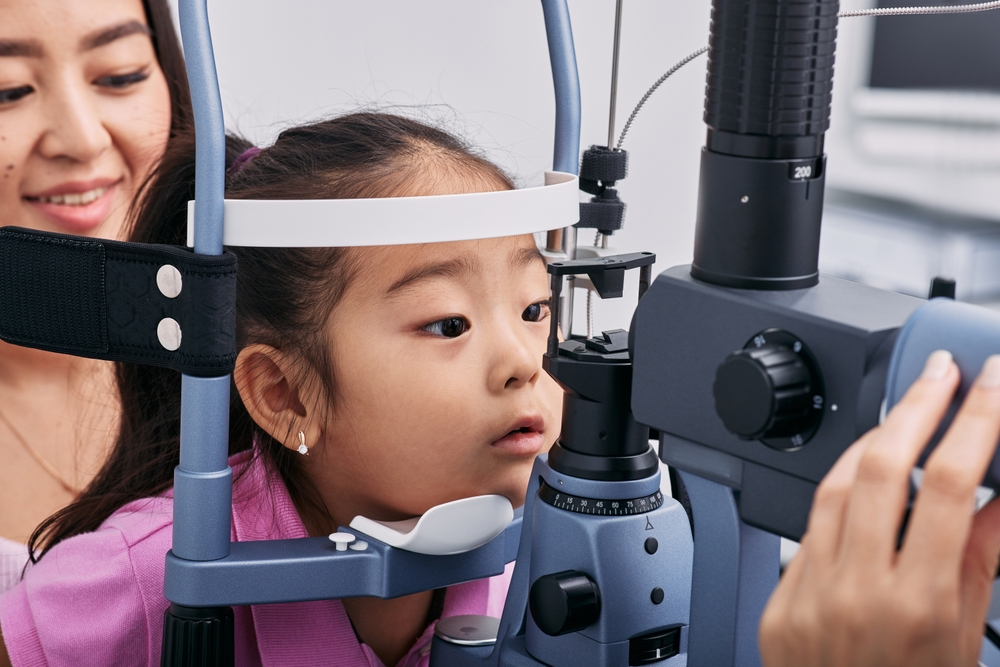Vision problems in children are not always obvious, especially when they are at an early stage when it is difficult for children to realise their eyesight has problems to share with their parents because:
- Children with congenital eye defects such as congenital myopia / astigmatism / hyperopia, congenital amblyopia.
- The children's eyes adjust a lot, so they can adapt to myopia and do not perceive abnormalities.
- Some eye diseases do not have obvious symptoms when children are young
- Children do not know how to express vision problems to parents
Therefore, it is extremely important to take the initiative to bring children to ophthalmology facilities for early detection of eye diseases and take timely support measures to maintain the child's visual quality to help them play, learn and develop comprehensively.
Refractive Errors
Refractive error is the most common paediatric eye problem in young children, especially school-age children. The three most common refractive errors are myopia, hyperopia, and astigmatism. Refractive errors, especially myopia, are always associated with an increased risk of continuing to worsen. Severe myopia not only makes it difficult for children to find surgical options to treat myopia in adulthood but also increases the risk of serious eye complications such as retinal degeneration or retinal detachment.
Strabismus
Strabismus is a disease where the eyes do not move in the same direction when we look at an object. When one eye looks straight ahead, the other eye will glance inward, outward, up, or down. Strabismus occurs when there is an imbalance between the oculomotor muscles. Children under 6 years of age and school-age children can treat strabismus by wearing glasses and having their vision checked periodically to preserve binocular function and prevent strabismus vision decline.
Amblyopia/Lazy Eyes
Amblyopia is a type of poor vision and cannot be corrected directly by glasses or contact lenses. In most cases, children will not have complaints of poor vision or difficulty seeing because they have adapted to the change in vision over a long period of time. Amblyopia can be improved through exercise, but this treatment is only effective at aged less than 10 years old. After this age, the treatment process will no longer work as expected.
Congenital eye diseases
There are many eye diseases that can appear from birth such as retinopathy of prematurity, glaucoma, blocked tear ducts, and congenital cataracts. Babies can suffer from these diseases due to genetic reasons, premature birth, or chromosomal abnormalities.
According to the American Optometric Association (AOA), children should have a comprehensive eye exam:
- New born baby
- Children at 6-12 months old
- Children 1 - 3 years old
- Children 3-5 years old
- Children 3-5 years old
In addition, if parents see their children have any abnormal signs of vision such as children tend to squint when reading, tilt their head to see clearly, look closely at the TV or computer screen, rubbing their eyes many… take your children to eye hospitals for timely examination and treatment.
Eye exams for children need to be done periodically, 1-2 times a year. If someone in the family has eye disease (father, mother, brother, or sister with myopia, glaucoma), the child's eye examination must be more concerned.
With a team of experienced doctors, Japanese standard procedures and modern equipment systems, parents can safely protect their children's eyes with intensive care packages:
- Student Refraction Test: discount up to 50% - only 250,000 VND for children to have a thorough vision check-up, and at the same time receive advice from an ophthalmologist, applicable to children from 6-17 years old. .
- Myopia Control Package: In addition to the usual vision tests, children will periodically check the axis of the eyeball and closely monitor the increase in myopia in the child's eyes, thereby optimal indications to limit the myopia progression. The Myopia Control Package at Japan International Eye Hospital is only 1,500,000 VND for 2 years of examination and consultation.

